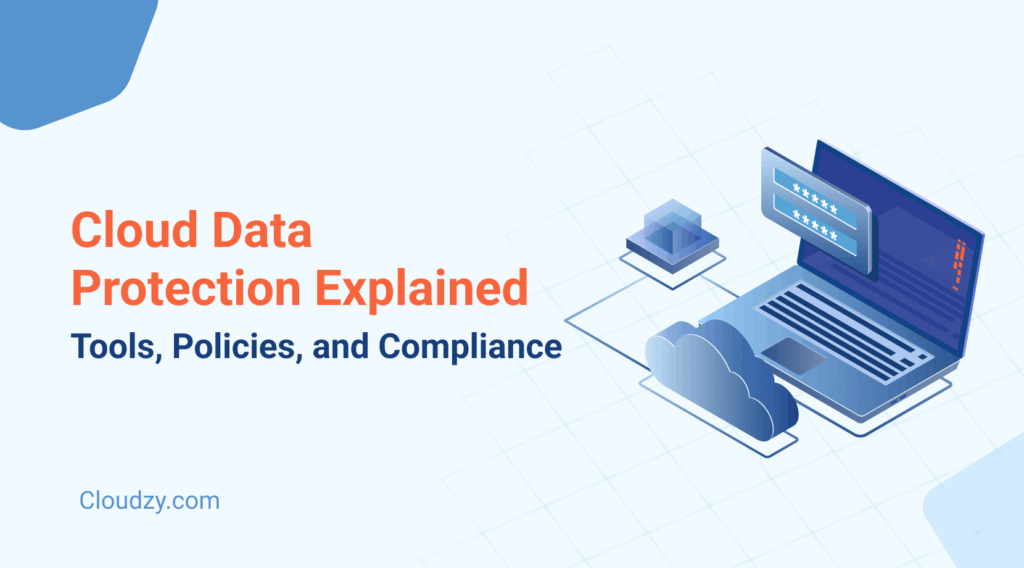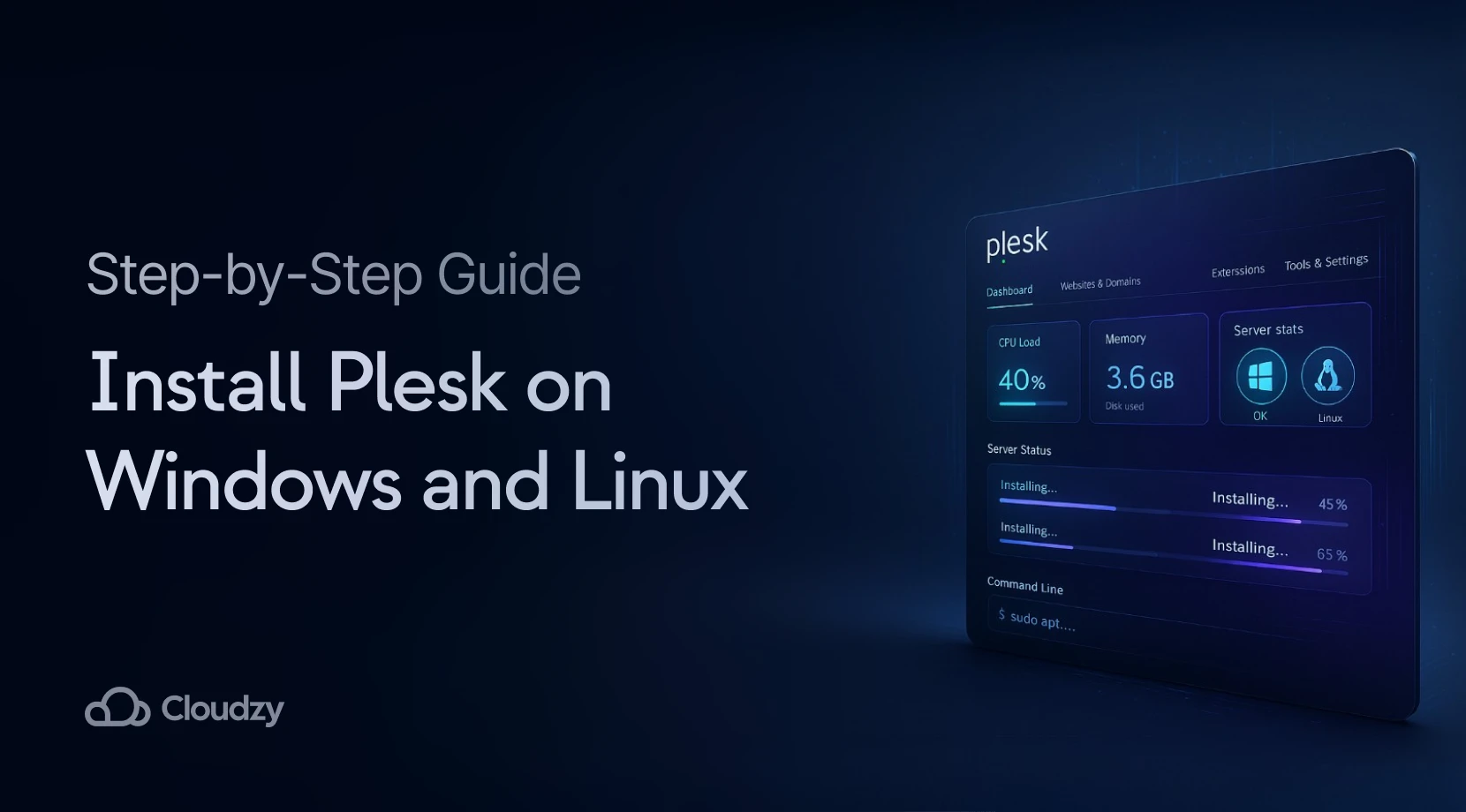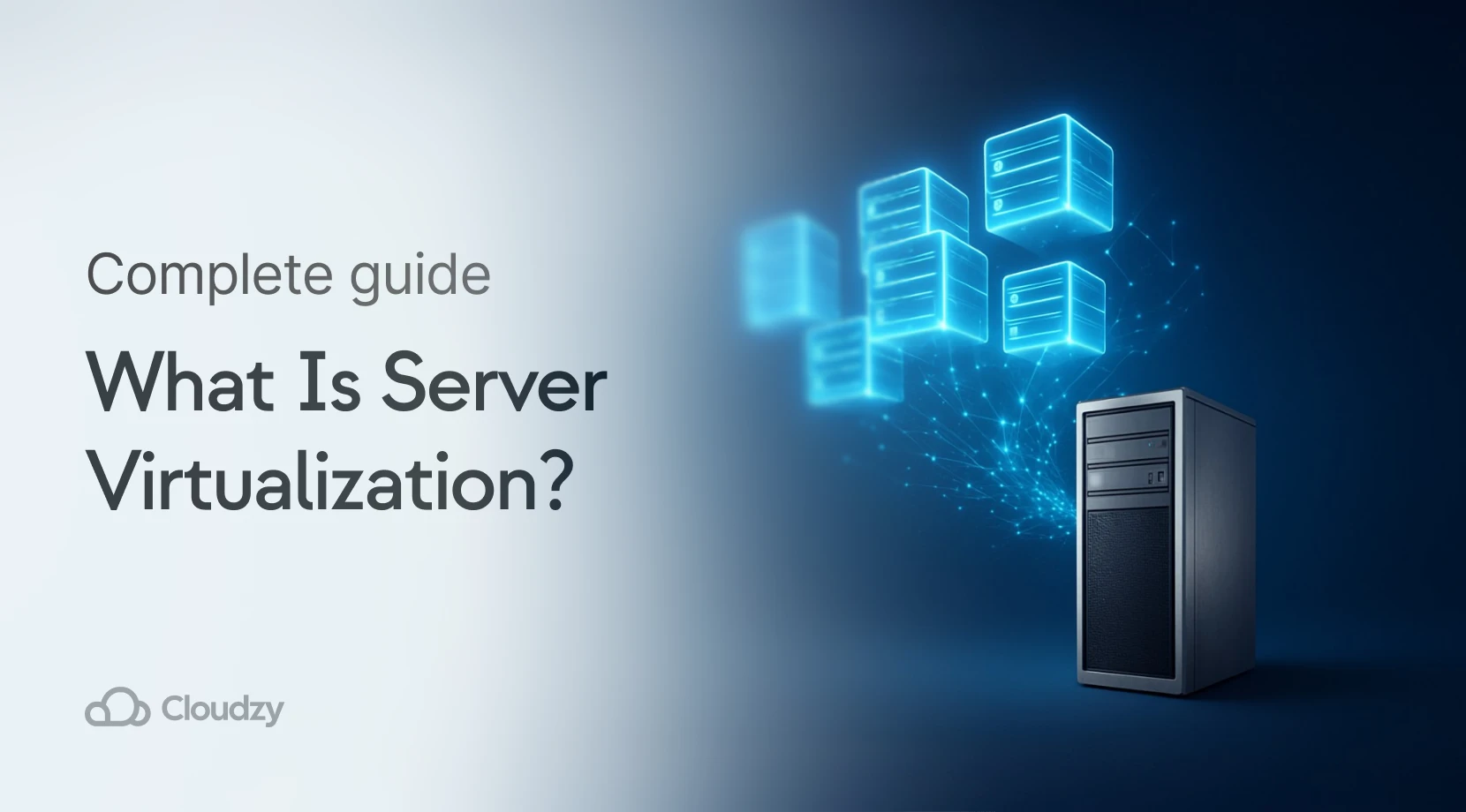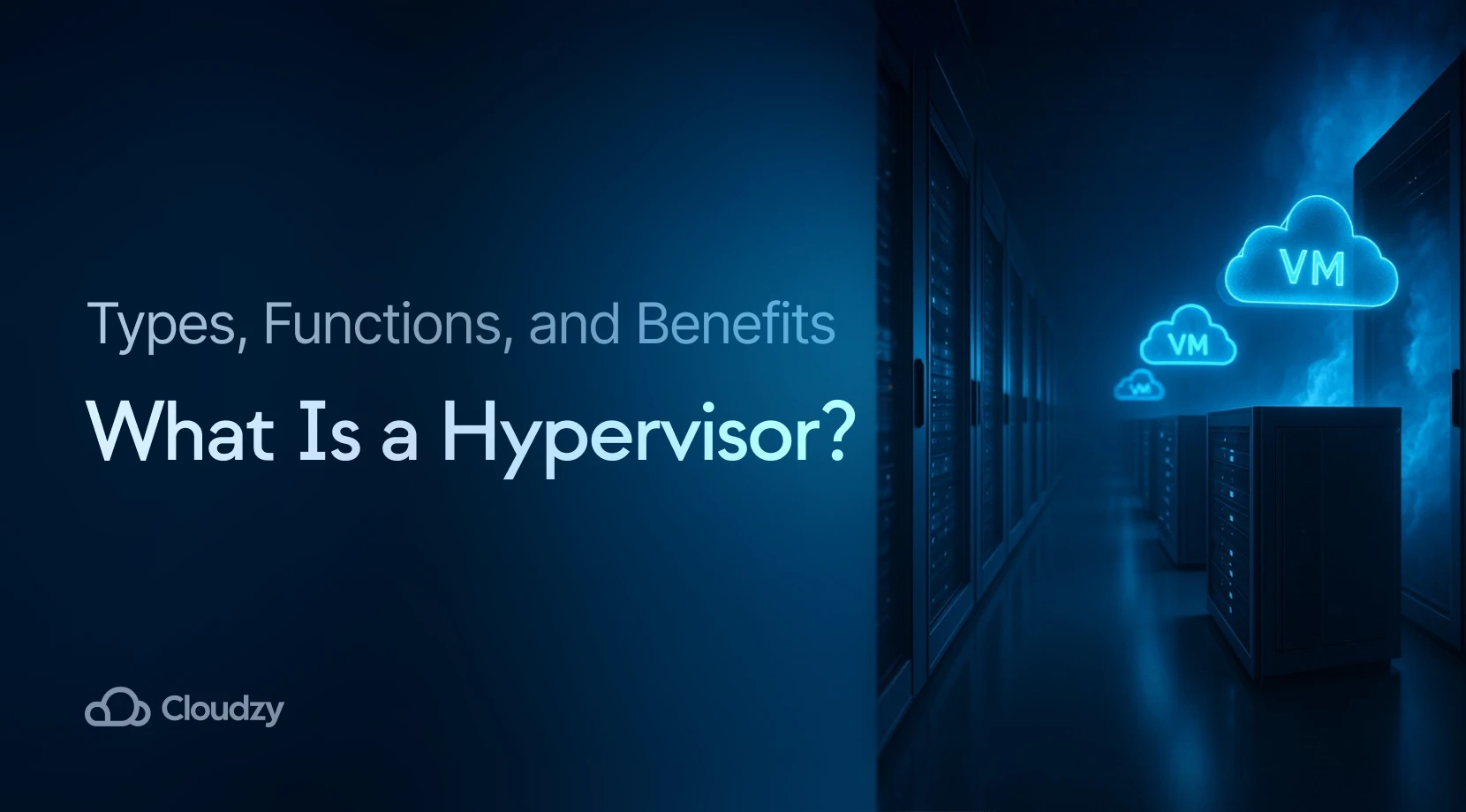In an era where businesses heavily rely on cloud services, cloud data protection and cloud data security have become daily concerns. Data breaches, accidental deletions, and compliance fines highlight the stakes of data protection and the cloud, making it more important than ever to safeguard information in cloud systems.
But what is cloud data protection, really? It’s about securing sensitive data in cloud environments against loss, leakage, or unauthorized access. From encryption and backups to strict access controls and well-defined policies, cloud data protection solutions and cloud data security practices let companies use the cloud confidently.
What is Cloud Based Data Protection?
Cloud-based data protection refers to the set of strategies and tools used to safeguard data stored or processed in cloud computing environments. Whether your data lives in a SaaS application or an IaaS cloud server, the goal is the same: protect it from loss, theft, or unauthorized access.
This means keeping data confidential, intact, and available whenever needed, even as it moves across networks or between different cloud services. In essence, it’s an extension of traditional data security practices, adapted to the unique challenges and shared responsibility model of cloud computing.
What Makes Data Protection in Cloud Computing so Important?
Moving data and applications to the cloud offers flexibility and scale, but it also introduces new risks. Data protection in cloud computing is so important because a single breach or data loss incident can have far-reaching consequences.
If sensitive customer information stored in the cloud is exposed, a company could face reputation damage and legal penalties under data privacy laws. Additionally, many organizations now use multiple cloud services or SaaS apps, making a unified multi cloud data protection strategy necessary across all platforms. In short, without strong cloud-focused safeguards, the benefits of cloud computing can quickly turn into liabilities.
How Is Data Protected in the Cloud?
For anyone wondering how to protect cloud data, the answer lies in combining a well-planned architecture with vigilant day-to-day controls. It starts with a strong cloud security architecture that defines how all your cloud assets are secured, from networks and servers to applications and databases.
On top of that foundation, strong cloud infrastructure security practices build multiple layers of defense around your data. These include encrypting data both at rest (when stored) and in transit (as it travels over the Internet), enforcing strict IAM (Identity and Access Management) policies with least-privilege access and multi-factor authentication, and performing regular data backups. Continuous monitoring for threats or misconfigurations is also key, so any weakness in the system can be spotted and fixed before it leads to a breach.
By blending these architectural safeguards and active security measures, cloud providers and customers together create a secure environment where data remains protected.
What Are the Types of Data Protection in Cloud?
There are several forms of data protection in cloud environments that businesses should implement, each addressing specific risks to data. Some of the main types include:
- Encryption: Encryption scrambles data so only authorized parties can read it. It’s applied to data at rest and in transit. Even if attackers intercept encrypted data, they cannot read it without the decryption keys.
- Backup and Recovery: Regularly copy cloud data to a secure secondary location. Backups mean if data is deleted, corrupted, or held by ransomware, you have a copy to restore. With a solid disaster recovery plan, downtime stays minimal.
- Identity and Access Management (IAM): Control who can access data and what they can do with it. This involves authenticating users (passwords, MFA) and setting fine-grained permissions. Limiting each user or service to only the data they need reduces the chance of insider threats or accidental exposure.
- Monitoring and Data Loss Prevention: Continuously watch for suspicious activity or unauthorized data transfers. Monitoring tools and Data Loss Prevention (DLP) systems detect unusual behavior (like large downloads of sensitive files or moving data outside approved channels) and can automatically block such actions.
All these methods work together to protect your data. In practice, companies use multiple techniques as part of a comprehensive data protection cloud strategy.
Why Your Company Needs Cloud Data Protection
Even smaller businesses or those outside high-risk industries can’t afford to neglect cloud data protection. Here are a few key reasons it should be a priority:
- Preventing Breaches and Leaks: Cloud storage is a prime target for cybercriminals. Without proper protection, sensitive data (like customer details or intellectual property) could be stolen or leaked. A strong cloud data protection program reduces the risk of hackers accessing your information or insiders accidentally exposing it.
- Maintaining Business Continuity: Data loss can cripple operations. If your cloud data is hit by ransomware or accidentally deleted, it could halt your business. Features like backups, redundancy, and rapid recovery help keep things running even when incidents occur.
- Meeting Compliance Requirements: Industries like finance or healthcare have strict regulations (GDPR, HIPAA, etc.) around data security. Companies need cloud data protection to follow these rules. Having a clear cloud data protection policy and strong controls avoids fines and shows clients you handle data responsibly.
- Maintaining Control and Visibility: When data moves to the cloud, some control shifts to the provider. But you’re still responsible for what happens to your data. Strong cloud data protection and management practices give visibility into where data is stored, who accesses it, and how it’s used. This oversight helps spot misconfigurations or unauthorized use early.
Data Protection and the Cloud: Best Practices for Companies
Technology alone isn’t enough. When handling data protection and the cloud, companies should follow best practices to cover all their bases. Here are some cloud data protection best practices to keep cloud data secure:
- Encrypt Data at All Times: Enable encryption for data at rest (in storage) and in transit (moving over networks). Manage encryption keys carefully (or use the cloud provider’s key management service) to prevent unauthorized decryption.
- Use Strong Access Controls: Apply the principle of least privilege for cloud accounts. Set up role-based access control (RBAC) so each user or service only accesses what they need. Turn on multi-factor authentication for logins to add a layer of security beyond passwords.
- Back Up and Test Restores: Maintain regular backups of critical cloud data in a separate location or service. Also, periodically test that you can restore the data. A backup means nothing if you can’t recover it when needed.
- Monitor Activity and Audit Regularly: Use cloud monitoring tools and logs to see who is doing what with your data. Set up alerts for unusual patterns (like a user downloading an unusually large amount of data). Conduct regular audits or penetration tests on your cloud setup to catch any weaknesses.
- Establish a Cloud Data Protection Policy: Clearly document how your organization handles cloud data—who can access what, which cloud services are approved, and how to respond to incidents. Train employees on this policy because human error (like a misconfigured storage bucket) can lead to data exposure.
Maintain Consistency Across Multi-Cloud Setups: If your company uses multiple cloud providers or a hybrid cloud, use a unified approach to security. Standardize policies and tools across environments so your multi cloud data protection measures are consistent. This way, one cloud won’t become a blind spot in your defenses.
Best Cloud Data Protection Tools to Use Today
Manually managing all these safeguards can be complex, but luckily there are many cloud data protection solutions available. These tools help automate security tasks, monitor for threats, and enforce policies across your cloud environment. A few notable categories and examples include:
- Cloud Access Security Brokers (CASBs): These act as gatekeepers between your users and cloud apps. For example, Cisco Cloudlock monitors activity in SaaS applications and enforces security policies such as blocking unsanctioned file sharing or flagging sensitive data.
- Endpoint and Workload Protection: Solutions like CrowdStrike and SentinelOne secure cloud servers and user devices by detecting malware, intrusions, and other threats in real time. This way, whether data resides on a cloud VM or an employee’s laptop, it’s defended against attacks.
- Identity Management and SSO: Services such as Okta help manage user identities and access. They provide single sign-on (SSO) and multi-factor authentication for cloud apps, so only the right people (and devices) can get to your company’s data.
- Cloud Security Platforms: Comprehensive security platforms (e.g., Zscaler or Qualys) offer a suite of protections, ranging from network threat filtering and zero-trust access to vulnerability scanning and compliance reporting. These help maintain a strong security posture across all your cloud resources.
Of course, this is just a sample of the tools available. For a more extensive look at modern cloud security software, check out our guide on top cloud security tools for 2025.
Final Thoughts on Cloud Data Protection
Cloud data protection comes down to proactively safeguarding your information when dealing with cloud-based technologies. Strong internal policies, best practices, and the right tools allow companies to confidently leverage the cloud while keeping sensitive data safe and compliant.
Remember that protecting data in the cloud is not a one-time setup but an ongoing process of monitoring, updating, and educating your team. When done right, it lets your organization enjoy the full benefits of cloud computing without losing sleep over security risks. For any business, this is an ongoing commitment. By staying vigilant and updating your cloud defenses, you can protect your data as threats evolve.




One thought on “Cloud Data Protection Explained: Tools, Policies, and Compliance”
Great breakdown of how cloud data protection is more than just backups. The reminder about the shared responsibility model is especially important—many teams still underestimate their role in securing cloud environments.